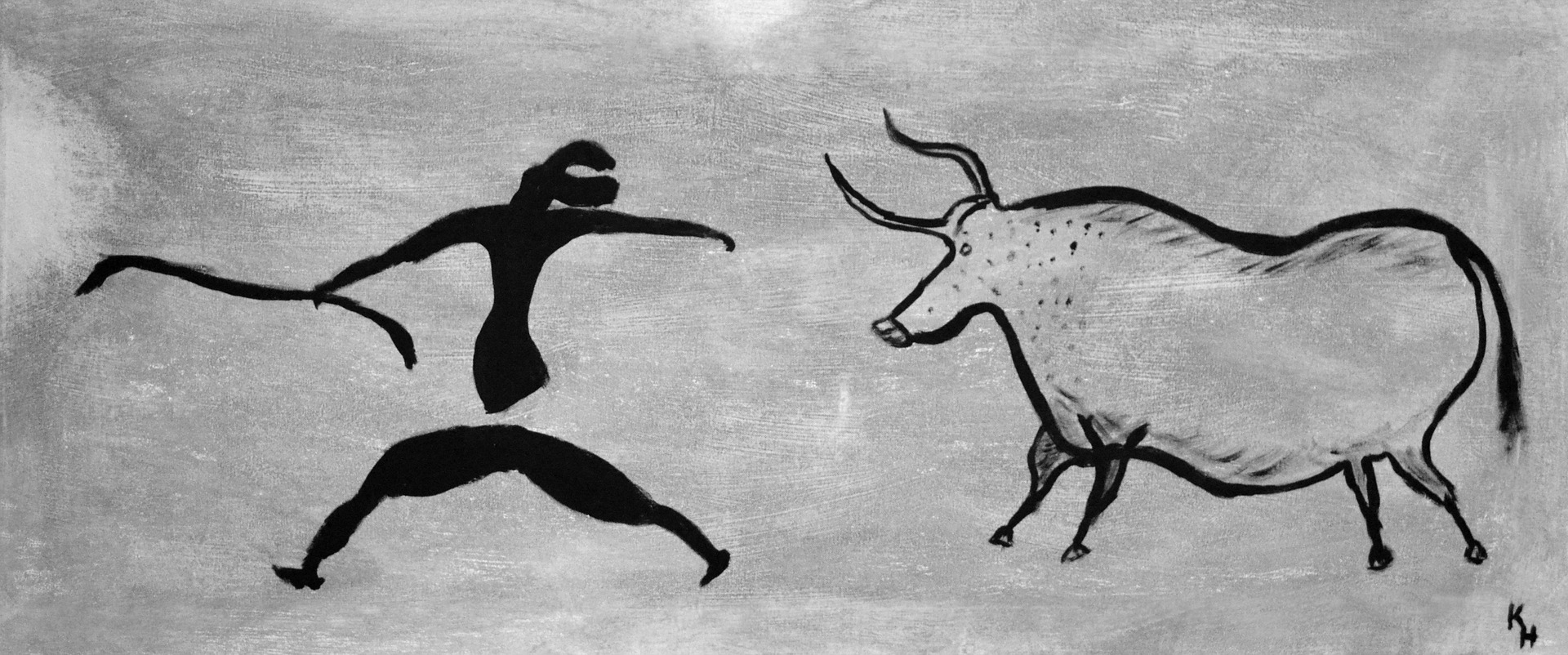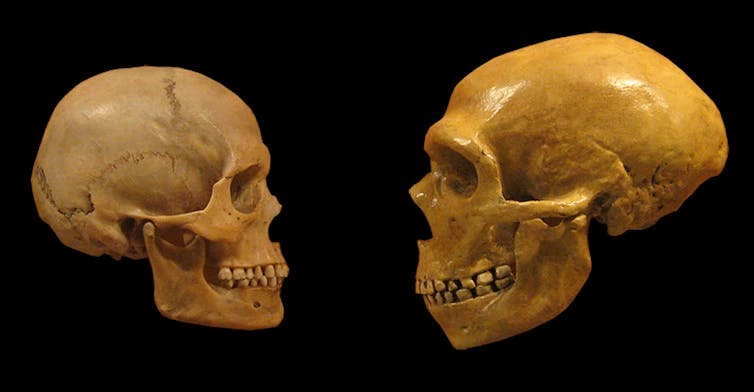Lifestyle
Curious Kids: how did people talk in the Stone Age?

The Stone Age began when several species of apes started to make simple tools by chipping sharp pieces of stone from larger pieces of rock. These apes stood partly upright when they walked and that meant their hands were free to do things, like make tools. These early upright apes had small brains, not very different from a chimpanzee’s brain, and they did not speak. (Pixabay photo)
How did people talk in the Stone Age? – Tsubamé, aged eight, London, UK
The Stone Age refers to a time in the distant past. It started around 3 million years ago and lasted until about 40,000 years ago.
It is named the Stone Age because during that time our distant ancestors made their tools from stones. Humans like us – the species Homo sapiens – appeared long after the start of the Stone Age, only about 200,000 years ago.
The Stone Age began when several species of apes started to make simple tools by chipping sharp pieces of stone from larger pieces of rock. These apes stood partly upright when they walked and that meant their hands were free to do things, like make tools. These early upright apes had small brains, not very different from a chimpanzee’s brain, and they did not speak.

Curious Kids is a series by The Conversation that gives children the chance to have their questions about the world answered by experts. If you have a question you’d like an expert to answer, send it to curiouskids@theconversation.com and make sure you include the asker’s first name, age and town or city. We won’t be able to answer every question, but we’ll do our very best.
Other apes who walked upright came later in the Stone Age. They have been given names like Homo habilis (handy man) or Homo erectus (upright man). These species lived in Africa around 1 to 2 million years ago, still long before people like us existed. They had larger brains than the first upright apes, but their brains were still smaller than ours. They were not as intelligent as us and did not speak, even though they would have made sounds.
About 400,000 years ago, three species that had much larger brains than the earlier upright apes all lived at around the same time. These were called Neanderthals, Denisovans, and an early form of the species Homo sapiens – our ancestors.
The Neanderthals and Denisovans lived outside of Africa in the part of the world known as Eurasia, which includes Europe. Little is known about the Denisovans, but by around 100,000 years ago Neanderthals had wooden spears and a few simple tools made from the bones of animals such as deer in addition to their tools made from stone.

hairymuseummatt (original photo), DrMikeBaxter (derivative work), via Wikimedia Commons, CC BY-SA
Some people think that because of their large brains and their ability to make tools other than those from stone, Neanderthals could speak. But this is just a guess. The last of the Neanderthals died about 40,000 years ago.
People like us
The early humans lived in Africa. By about 200,000 years ago the primitive Homo sapiens had evolved into what we now call modern humans. These modern humans were as intelligent as we are today, and could speak using language just as we do today. “Homo sapiens” means “wise humans”.
Later in the Stone Age, around 60,000 years ago, people travelled out of Africa and eventually spread to the rest of the world.
Early on, even our Homo sapiens ancestors only made tools from stones, but having the ability to speak, they probably used their language to teach one another.
As time went on, they learned to make many different kinds of tools from stones, wood, bones and leather. They had clothing, shoes and made shelters, and they hunted together for food. By 40,000 years ago, and possibly even earlier, modern humans drew pictures on the walls of caves.
There would have been far fewer different languages in the Stone Age than there are today. But the languages that did exist would have been just like our modern languages. The people would have spoken in sentences with nouns and verbs, even though the words they used would have been different, just as, say, Japanese words are different from English words or French words.
Different languages
Languages would have been different among tribes. People might have found it hard to talk to someone from another tribe, just as when we go on holiday to another country we sometimes find it hard to understand the language.
The languages would have had fewer words than we have today because they didn’t need words for things like televisions, cars or computers. But like us, the modern humans of 200,000 years ago would have counted things. They would have had words for “mother” and “father” or “sister” and “brother”. They would have had names for animals and plants, they would have been able to make plans, say “please” and “thank you” and they would have had names for each other.
The early modern humans probably talked about many of the same things we talk about: what to eat, who their friends were. Parents would have talked about their children, and children would have played with each other, probably talking all the time just as children do today. They would also have sung songs to each other.
They might have been Stone Age people, but they were modern when it came to talking.![]()
Mark Pagel, Professor of Evolutionary Biology, University of Reading
This article is republished from The Conversation under a Creative Commons license. Read the original article.





















